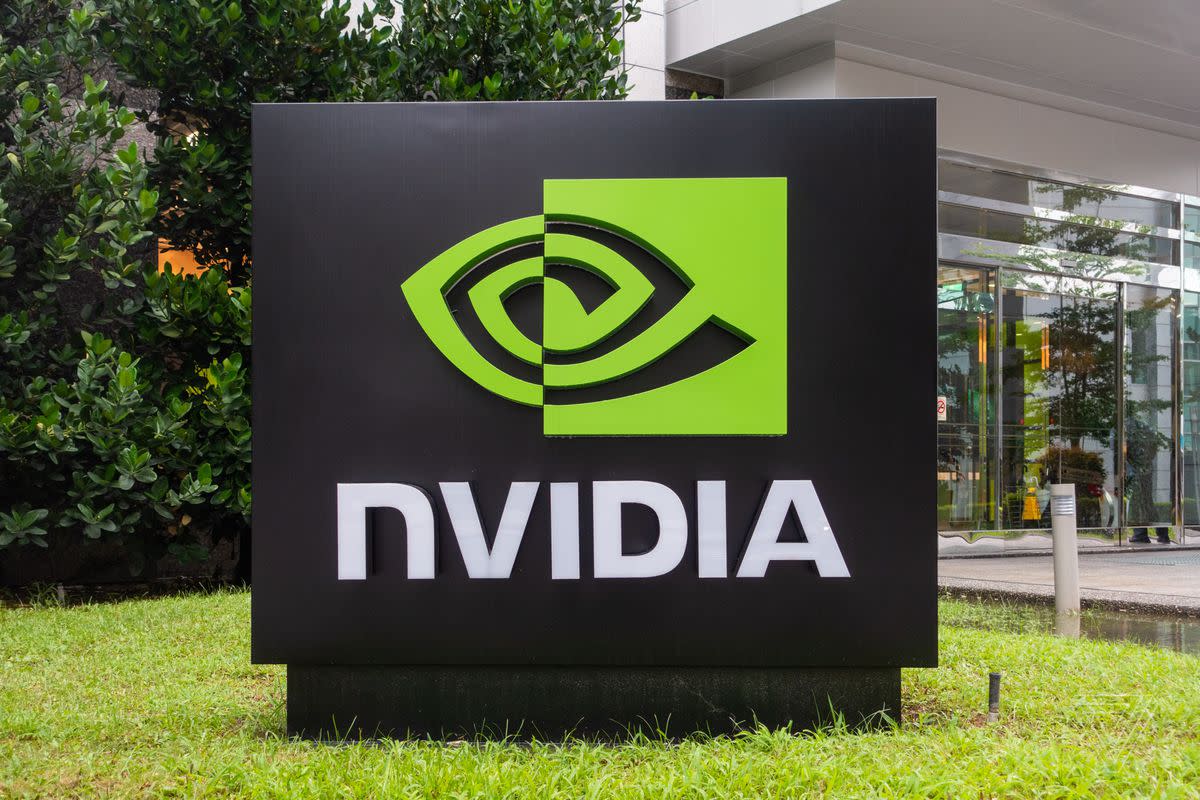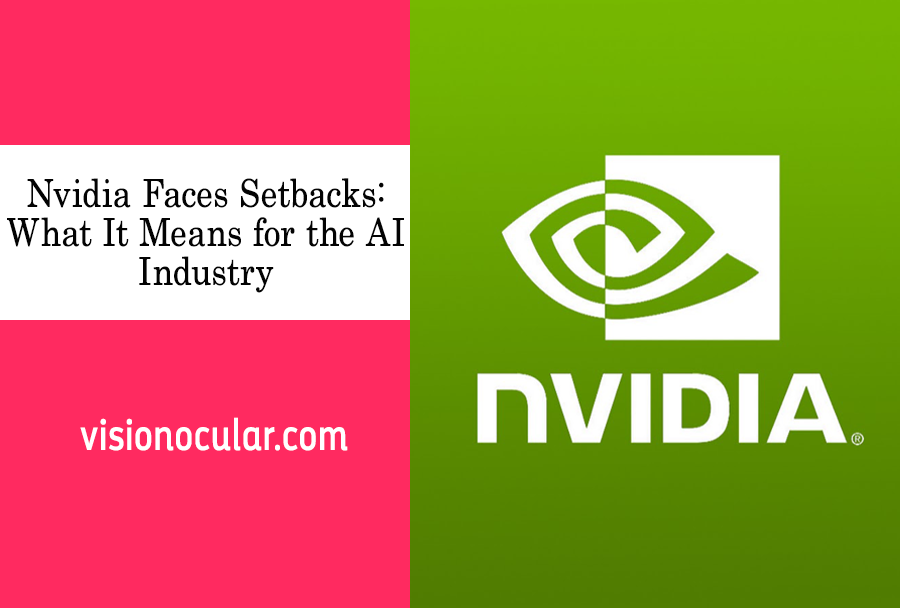Nvidia, a name synonymous with cutting-edge graphics processing and artificial intelligence (AI), is facing some unexpected turbulence. Known for its dominance in the AI hardware market, Nvidia Faces Setbacks have sent ripples through the tech community. This blog delves into the challenges Nvidia Faces Setbacks is currently facing and what these developments could mean for the AI industry as a whole.
A Brief Overview of Nvidia’s Dominance
Nvidia has long been a leader in the graphics processing unit (GPU) market, with its GPUs being a critical component in AI research and development. The company’s products are at the heart of many AI applications, from deep learning to neural networks, powering everything from self-driving cars to cutting-edge research in medicine. Their GPUs are favored by tech giants like Google, Microsoft, and Amazon, making Nvidia Faces Setbacks an integral part of the AI ecosystem.
The Nvidia Faces Setbacks: What Went Wrong?
While Nvidia’s position has been strong, several recent developments have caused concern among investors and industry watchers.
- Supply Chain Issues: Like many tech companies, Nvidia has been grappling with supply chain disruptions. The global chip shortage, exacerbated by the COVID-19 pandemic, has hit Nvidia hard. These shortages have led to delays in production and delivery, causing frustration among customers and partners.
- Competitive Pressure: Nvidia is no longer the only player in town. Competitors like AMD and Intel have been ramping up their efforts to capture market share in the GPU and AI hardware space. AMD’s new line of GPUs and Intel’s push into AI hardware with their Xeon processors and Gaudi accelerators are posing significant challenges to Nvidia’s dominance.
- Regulatory Challenges: Nvidia’s attempted acquisition of ARM Holdings, a deal valued at $40 billion, was a major strategic move to strengthen its position in the AI market. However, the deal has faced intense scrutiny from regulators in multiple countries, citing concerns over market competition and national security. The uncertainty surrounding this acquisition has been a significant drag on Nvidia’s stock price and strategic planning.
- Financial Performance: Despite posting strong revenue figures, Nvidia has seen its stock price fluctuate wildly in recent months. Concerns over the sustainability of its growth, especially in light of the supply chain and competitive pressures, have made investors jittery. The company’s heavy reliance on the gaming sector, which has seen some decline post-pandemic, has also contributed to market unease.
- Technological Hurdles: As AI applications become more complex, the demand for more powerful and energy-efficient GPUs is growing. Nvidia’s current lineup, while impressive, is facing challenges in keeping up with these demands. The company’s next-generation architecture, codenamed “Hopper,” is eagerly anticipated, but any delays or issues in its development could further impact Nvidia’s position in the market.
The Impact on the AI Industry
Nvidia’s challenges are not just a concern for the company itself; they have broader implications for the AI industry.
- Slowing Innovation: Nvidia’s GPUs have been a key enabler of AI innovation. If the company is unable to keep up with demand or if its competitors overtake it in technological advancements, it could slow down the pace of innovation in AI. This is particularly concerning in areas like autonomous vehicles, healthcare, and large-scale data analysis, where AI advancements are critical.
- Increased Costs: Supply chain disruptions and competitive pressures could lead to increased costs for AI hardware. This would not only affect companies that rely on Nvidia’s products but could also have a ripple effect throughout the industry. Startups and smaller companies, in particular, may find it more difficult to afford the high costs of AI development, potentially stifling innovation and competition.
- Shift in Market Dynamics: Nvidia’s Faces setbacks could lead to a shift in market dynamics. Companies that have traditionally relied on Nvidia may start to explore alternatives, leading to a more diversified AI hardware market. While this could be beneficial in terms of reducing reliance on a single supplier, it could also lead to fragmentation and increased complexity in the AI ecosystem.
- Regulatory Scrutiny: The regulatory challenges faced by Nvidia, particularly in its acquisition of ARM, could lead to increased scrutiny of the AI industry as a whole. Governments around the world are becoming more aware of the strategic importance of AI, and Nvidia’s experience could be a harbinger of more stringent regulations and oversight in the future.
- Talent and R&D Implications: Nvidia’s ability to attract and retain top talent is crucial to its success. If the company’s Nvidia faces setbacks lead to a loss of confidence among employees, it could impact its research and development efforts. This would be a significant blow, as Nvidia’s R&D is key to its ability to stay ahead of the competition and continue driving innovation in AI.

The Broader Implications: AI Industry Outlook
While Nvidia’s challenges are significant, it’s important to view them in the broader context of the AI industry’s future.
- Resilience of AI Growth: The AI industry is still in its growth phase, with enormous potential for expansion across various sectors. While Nvidia Faces setbacks could slow certain aspects of this growth, the overall trajectory remains positive. Companies are increasingly investing in AI, and new use cases are emerging regularly. Nvidia’s challenges may simply be a bump in the road rather than a sign of a broader slowdown.
- Potential for Disruption: Nvidia’s current situation could open the door for disruption in the AI hardware market. Startups and smaller companies may see this as an opportunity to innovate and challenge the established players. This could lead to the development of new technologies and approaches that further accelerate AI advancements.
- Collaborative Opportunities: Nvidia’s competitors, such as AMD and Intel, may see this as an opportunity to collaborate with companies that have traditionally relied on Nvidia’s products. This could lead to new partnerships and collaborations that drive innovation and growth in the AI industry. Additionally, Nvidia itself may seek out new partnerships or acquisitions to address its challenges and strengthen its position.
- Focus on Sustainability: The AI industry is becoming increasingly aware of the environmental impact of its operations, particularly in terms of energy consumption. Nvidia’s technological hurdles in developing more energy-efficient GPUs highlight the importance of sustainability in AI development. This could lead to a greater focus on creating AI solutions that are not only powerful but also environmentally responsible.
- Long-Term Strategic Shifts: Nvidia’s experience may prompt other companies in the AI industry to reevaluate their strategies. This could lead to a shift in focus towards more diversified product lines, greater emphasis on regulatory compliance, and increased investment in supply chain resilience. In the long term, these strategic shifts could result in a more stable and sustainable AI industry.
Read more : OpenAI 1 Challenges Google with Innovative ChatGPT Search Engine
What’s Next for Nvidia?
Despite the challenges it currently faces, Nvidia is not a company to be underestimated. With a history of innovation and a strong track record, Nvidia has the potential to navigate these Nvidia faces setbacks and emerge stronger.
- Technological Innovations: Nvidia’s upcoming product releases, including the much-anticipated Hopper architecture, will be crucial in determining the company’s future. If Nvidia can successfully address the technological challenges it faces, it could regain its position as the undisputed leader in AI hardware.
- Strategic Acquisitions and Partnerships: Nvidia’s attempted acquisition of ARM may be facing challenges, but the company is likely to continue exploring other strategic acquisitions and partnerships. These moves could help Nvidia diversify its product offerings and strengthen its position in the AI market.
- Focus on Core Strengths: Nvidia faces setbacks may choose to double down on its core strengths in GPU development and AI hardware, focusing on what it does best. By continuing to innovate in these areas, Nvidia can maintain its competitive edge and continue to drive advancements in AI.
- Adapting to Market Dynamics: Nvidia’s ability to adapt to changing market dynamics will be key to its success. Whether it’s navigating supply chain disruptions, addressing competitive pressures, or responding to regulatory challenges, Nvidia will need to be agile and responsive to stay ahead in the AI industry.
Conclusion: A Turning Point for Nvidia and the AI Industry
Nvidia’s Faces Setbacks are a reminder that even the most dominant companies in the tech industry are not immune to challenges. However, these challenges also present opportunities for growth, innovation, and strategic shifts. For the AI industry as a whole, Nvidia’s experience could lead to increased competition, more diversified markets, and a greater focus on sustainability and regulatory compliance.
As Nvidia navigates this turning point, the AI industry will be watching closely. Whether Nvidia emerges stronger or whether its competitors seize the moment, the next few years will be critical in shaping the future of AI. One thing is certain: the AI industry is on the brink of significant change, and Nvidia’s journey will play a pivotal role in that evolution.









Leave a Reply